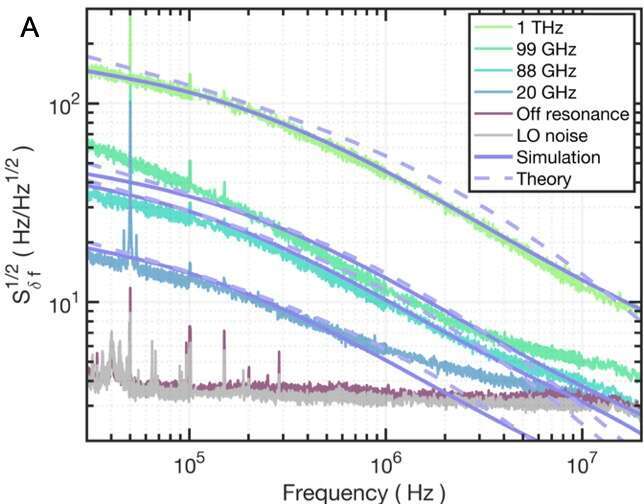
Thermo-refractive Noise in Silicon Nitride Microresonators
2Faculty of Physics, M. V. Lomonosov Moscow State University
3Russian Quantum Center
Thermodynamic noise places a fundamental limit on the frequency stability of dielectric optical resonators. Here, we present the characterization of thermo-refractive noise in photonic-chip-based silicon nitride (Si3N4) microresonators and show that thermo-refractive noise is the dominant thermal noise source in the platform.
The small mode volume of microresonators enables strong optical nonlinearities harnessed in emerging technologies such as microcombs [1], and enhances sensing capabilites used in fundamental research such as cavity quantum optomechanics [2]. However, the small mode volume comes at a cost: limitations arise from thermal fluctuations such as thermo-refractive and thermoelastic noises, which cause fluctuations in the microresonator resonance frequency, limiting applications that require high frequency stability. Therefore, thermal noises have been extensively studied [3–5], but theoretical analyses have been inconsistent across different platforms [6] and rely on auxiliary measurements of material parameters that are not always well-known. Experimental characterization of thermal noises is therefore required for a full understanding of a given system.
We employed balanced homodyne detection to, for the first time, characterize the thermo-refractive noise in on-chip Si3N4 microresonators, which are CMOS-compatible and have relatively complex structures compared to other types of microresonators. The cavity is probed on resonance under sufficiently low input power to avoid photothermal effects. The power-independence of thermo-refractive noise is verified by a power sweep over two orders of magnitude. The measurement results illustrated in Figure A are in good agreement with both the FEM simulation and the approximate theoretical prediction [4] for both frequency dependence (ω−1/2) and radius dependence (R−1). The agreement further indicates that the heat exchange with the cladding is one of the main contributors to the thermo-refractive noise in Si3N4 microresonators. Our results aid the understanding of the fundamental noise limits of Si3N4 microresonators and the generation of thermo-refractive noise in a complex photonic system.
[1] T. J. Kippenberg et al. Science 361.6402 (2018).
[2] M. Aspelmeyer, T. J. Kippenberg, and F. Marquardt. Reviews of Modern Physics 86.4 (2014).
[3] V. Braginsky, M. Gorodetsky, and S. Vyatchanin. Physics Letters A 271.5-6 (2000).
[4] M. L. Gorodetsky and I. S. Grudinin. JOSA B 21.4 (2004).
[5] A. B. Matsko et al. JOSA B 24.6 (2007).
[6] N. Kondratiev and M. Gorodetsky. Physics Letters A 382.33 (2018).


Powered by Eventact EMS